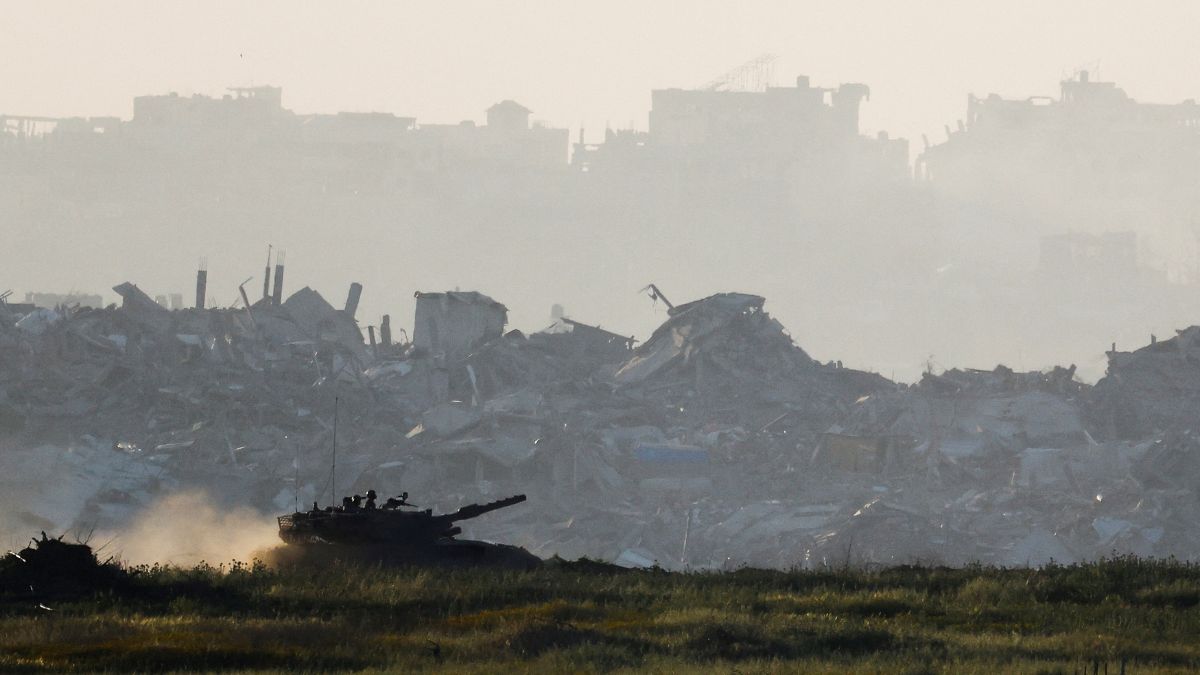Israel has launched a new ground offensive in Gaza, sending troops back into key areas just a day after a series of airstrikes shattered a fragile ceasefire with Hamas.
The Israel Defense Forces (IDF) stated that the operation aims to expand the “security zone” and create a “partial buffer” between northern and southern Gaza.
The military also confirmed regaining control of the Netzarim Corridor , a key strip of land that divides Gaza, which had been vacated under the ceasefire agreement in January.
Overnight into Thursday (March 20), Israeli airstrikes killed at least 70 Palestinians across the Gaza Strip , according to the local health authorities.
Hamas has condemned the renewed military action as a “dangerous breach” of the ceasefire deal, while Israel has justified its operations by accusing Hamas of refusing to release hostages and rejecting offers from mediators.
Israeli Defence Minister Israel Katz issued a warning, stating that Gaza residents would “pay the full price” if hostages were not returned and Hamas was not removed from power.
400 people killed in Gaza in a day
Tuesday’s aerial bombardment, which preceded the ground offensive, was one of the deadliest days of the war. Gaza’s Health Ministry reported that more than 400 people were killed , including women and children.
In Beit Lahia, northern Gaza, an Israeli strike on a funeral home killed 24 people, while another attack in the Al-Sabra neighborhood of Gaza City killed 21 people, including six children.
Israeli officials claimed that the strikes targeted Hamas mid-level leaders, but health officials in Gaza stated that civilians bore the brunt of the attack.
Israel maintains that Hamas fighters and officials operate from civilian areas, making it difficult to avoid collateral damage.
Why Israel chose to end the ceasefire
Mediators were engaged in ceasefire negotiations with Hamas when the Israeli strikes began. According to an anonymous senior Hamas official, the surprise attack was a deliberate act of deception by Israel, reported NPR.
At 2:10 am, the Israeli military launched a series of naval and airstrikes after weeks of secret preparations. Israeli officials later confirmed that the strikes were meant to pressure Hamas into releasing more hostages.
Leading Israeli defence analysts have admitted that Israel violated the ceasefire agreement, which was brokered during the final days of the Biden administration.
The deal stipulated that both sides would enter negotiations for a permanent end to the war after 16 days. However, Israel refused to proceed with the talks while Hamas remained in control of Gaza.
As the ceasefire stalled, Hamas used the pause in fighting to regroup. Aid supplies surged into Gaza, and Hamas leaders emerged from hiding to reestablish their presence in the territory.
In one instance, the Hamas-run Gaza City municipality announced efforts to collect taxes, prompting backlash from residents living among the ruins of the ongoing conflict.
The breakdown of the ceasefire has also had political ramifications in Israel. Prime Minister Benjamin Netanyahu faces a looming deadline to pass a national budget, and failure to do so could collapse his government.
The resumption of war has allowed him to strengthen his governing coalition by bringing back far-right ally Itamar Ben Gvir, who had previously withdrawn over the January ceasefire.
Analysts suggest that the strikes could continue for at least two weeks until the budget is passed, giving Netanyahu a stronger position in power.
A renewed humanitarian crisis
The resumption of hostilities has exacerbated an already dire humanitarian crisis in Gaza. The Civil Defense has warned of an impending famine due to Israel’s continued blockade of humanitarian aid. “We are on the brink of famine threatening the residents of the Gaza Strip,” spokesperson Mahmoud Basal said.
Human Rights Watch has accused Israeli forces of committing war crimes by targeting hospitals and denying patients essential medical care.
Also Read | Israeli strikes kill 1 UN worker in Gaza, 5 others 'severely' injured
Witnesses at three hospitals reported that Israeli forces cut off electricity, water, and food, mistreated medical staff, and deliberately destroyed medical facilities and equipment. Forced evacuations put patients in grave danger, further crippling Gaza’s already overwhelmed healthcare system.
What comes next as Israel protests
Thousands of Israelis have taken to the streets in protest against the resumption of war. Demonstrators in Tel Aviv carried posters with the faces of hostages still held in Gaza, demanding a deal for their release. Some protesters chanted, “If there’s no deal, we will burn the country down.”
Others marched towards Netanyahu’s residence in Jerusalem, calling for elections and accusing the government of abandoning the hostages. Polls indicate that a majority of Israelis oppose the end of the ceasefire and favour continued negotiations.
Many believe the government is prioritising political survival over the safe return of hostages, of whom 24 are believed to be alive in Gaza.
With Israeli air and ground operations intensifying, prospects for a resolution remain bleak.
Also Watch:
Egypt has presented a new ceasefire proposal, offering the release of a small number of sick and wounded hostages, as well as the bodies of deceased hostages, in exchange for a cessation of hostilities and increased humanitarian aid.
The proposal is nearly identical to one that was previously on the table before the ceasefire collapsed.
However, both sides remain entrenched in their positions. Israel insists that Hamas must release more hostages before negotiations can continue, while Hamas demands that Israel adhere to the original ceasefire terms, withdraw from the Gaza-Egypt border, and initiate talks to permanently end the war.
With inputs from agencies


)

)
)
)
)
)
)
)
)



